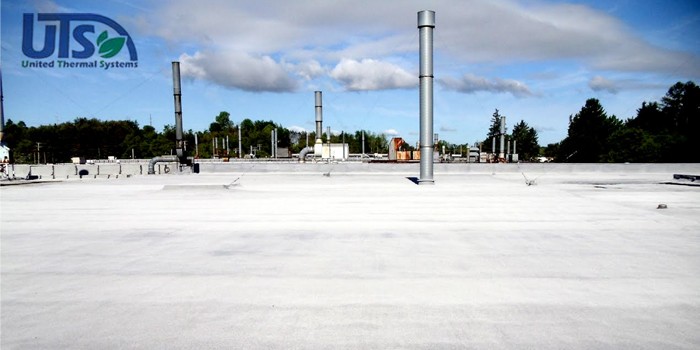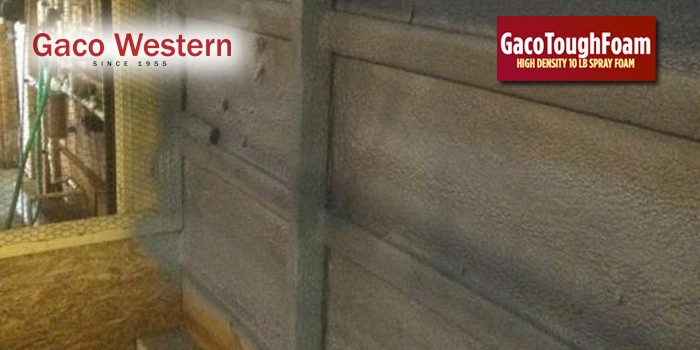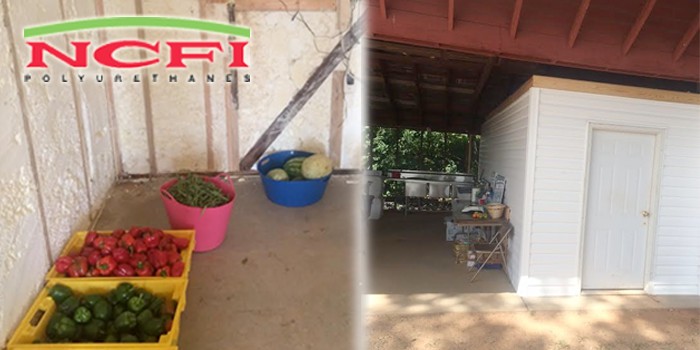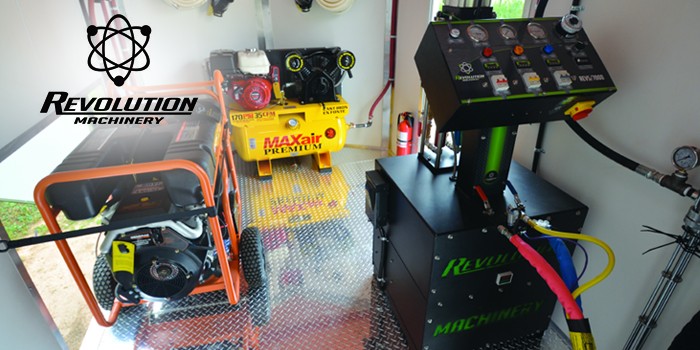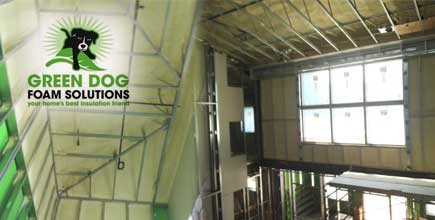
Newly Constructed Office Building Insulated With Closed-Cell Spray Foam
ABINGTON, PA - May 23, 2013 - Those who work inside an office building know that things can sometimes get heated, especially if you don't have good insulation. This was the case of a 16,000 sq. ft. office building owner who found himself in an all-too-common predicament: paying too much for energy bills and having a low-grade environment inside the building.
The owner opted to start from scratch: he contracted Calfayan Construction Associates, Inc to build a new office facility from the ground up on the same property, and, once that was in place, to demolish the existent building. This time around, it was decided that the best solution for the problems they had in the past was the application of spray foam insulation to the underside of the roof and the inside of the exterior walls.
Green Dog Foam Solutions (GDFS), which is a partner company of Calfayan Construction, took the reigns of the SPF application project.
Reis Calfayan, operations manager of GDFS and Calfayan Construction, affirmed that spray foam insulation was beneficial in providing solidity to the building envelope.
"When it comes to the air-sealing component, nothing can get the job done like spray foam," said Calfayan. "The owner wanted to have good insulation against the building envelope and have consistency with the comfortability of his employers…that's why he chose spray foam."
The job consisted of sealing the building envelope. To achieve this, spray foam insulation needed to be applied on the underside of the hip roof and on the exterior walls, which were finished in panelized steel framing.
According to Calfayan, they did not apply the SPF between the floors or the indoor walls because the application on the building envelope provided the structure with a monolithic air and vapor barrier.
Calfayan also said that prep work for the application was minimal because it was a new construction.
"Other than masking the windows of the building, we had to cover the floor for cleanliness, as well as different fixtures in the building for overspray precautions." said Calfayan.
The two-man GDFS crew was equipped with proper P.P.E, which included respirators and fully-covered jumpsuits; they used scaffolding which enabled easy access to the roofline. They installed 4.5 inches of 2 lb. closed-cell spray foam insulation to the roofline resulting in an R-value of 30. For the exterior walls, the crew applied 2 inches of 2 lb. closed-cell SPF, which resulted in an R-value of 14. The GDFS crew applied BaySeal CC spray foam insulation, which is manufactured by Bayer Material Science, on both substrates for a total spray area of 15,400 square feet.

Calfayan stressed that since the building was open-air, the crew only used a ventilation system in the spray-zone area.
"We used a tunnel fan that exhausted out to a window on the spray zone as well as some strategically placed fans along the building," said Calfayan. "On a big job like this, where everything is nice and wide-open, not much ventilation is required."
After the foam was installed, the crew applied a DC315 thermal barrier on the roofline and hung drywall on the exterior walls.
Calfayan affirmed that getting under the roof pitch was the most prominent adversity that his crew faced during the job.
"It's hard to get under those tighter areas," said Calfayan.
The crew completed the job in two weeks with one rig that was equipped with a Graco Reactor H25 proportioner as well as a Graco Fusion 18 spray gun. Calfayan said that during the project the building's temperature started to shift.
"The project took place during the summer months," said Calfayan. "During the application we noticed a significant indoor-temperature drop as soon as the roofline was sprayed."
Calfayan also noted that because the site was adjacent to a state road, the level of noise was considerable, but that during the SPF application project the crew noticed that the noise level had dropped and that the building had grown more resistant to sound infiltration.
Calfayan added that the use of spray foam insulation on a new construction made things easier to fulfill the client's demands.
"When the design gets pushed to a higher level, spray foam really makes getting an efficient building more achievable," said Calfayan. "You get to be really creative with your design: from weird rooflines to intersecting areas that can become problematic and still have a good, efficient building and air sealing."
After the application was completed, the employees moved their operation into the new building and, as per Calfayan, they are now very comfortable.
"They're very happy that they have good control over air-conditioning and heating temperatures," said Calfayan.
About Green Dog Foam Solutions: Green Dog Foam Solutions (GDFS), based out Huntingdon Valley, PA, is an experienced leader in the insulation industry. GDFS offers the finest insulation products, installation and service in the business. All of GDFS employees undergo extensive training and certification courses before being authorized to represent our company. GDFS specializes in closed-cell and open-cell polyurethane foam. For more information about GDFS, please use the contact details and links provided below.


